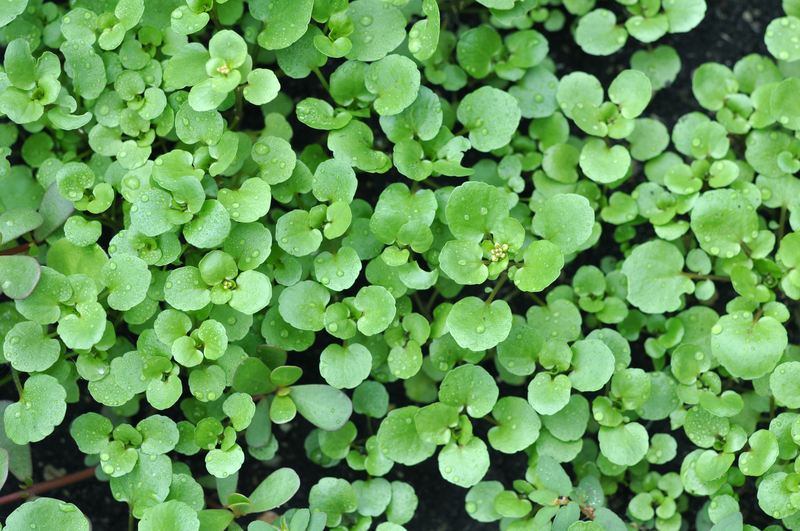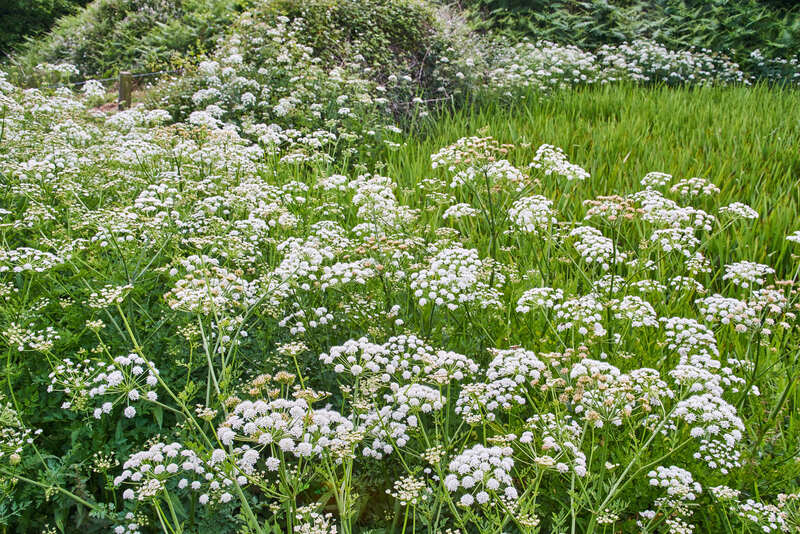Vertical Gardening: Elevate Your Green Space
Posted on 02/07/2025
Vertical Gardening: Elevate Your Green Space
Introduction to Vertical Gardening
If you're searching for an effective way to maximize your gardening efforts within a limited space, vertical gardening could be the ideal solution. As urban areas expand and traditional backyard space becomes scarce, vertical gardens--also known as living walls or green walls--are revolutionizing how people bring nature into their homes and communities. In this comprehensive guide, we'll explore what vertical gardening is, its advantages, how to get started, and expert tips to elevate your green space both aesthetically and functionally.

What is Vertical Gardening?
Vertical gardening is the practice of growing plants upwards rather than outwards, utilizing vertical surfaces like walls, fences, trellises, and purpose-built structures. This method is not only efficient for homeowners with limited square footage but also brings a fresh and modern look to indoor and outdoor spaces. Whether you want to grow lush flowers, healthy vegetables, or cascading vines, vertical gardens provide unique opportunities for creativity and sustainability.
Benefits of Vertical Gardening
- Space-Saving: Make the most of small areas such as balconies, patios, and compact yards.
- Improved Air Quality: Green walls can help filter out toxins and produce oxygen in enclosed spaces.
- Thermal Insulation: Vertical gardens can act as a natural insulator, reducing energy costs.
- Enhanced Aesthetics: Elevate the beauty of your environment with vibrant, living artwork.
- Noise Reduction: Dense foliage can help buffer noise from busy streets or neighboring properties.
- Biodiversity Boost: Create habitats for pollinators like bees and butterflies.
- Easy Maintenance: Many vertical gardening systems are designed for efficient watering and pruning.
Types of Vertical Gardening Systems
Before starting your vertical garden, it's essential to select a system that matches your space, plant preferences, and lifestyle. Here are the most popular options:
1. Living Walls & Green Walls
Living walls use panel systems that support soil or hydroponic inserts where plants grow all over the surface. These are ideal for indoor environments or large exterior facades.
2. Trellises and Arbors
Perfect for climbing plants--think ivy, wisteria, or clematis--trellises and arbors provide a strong framework for vines to scale upwards.
3. Modular Planter Boxes and Pockets
Stacked or wall-mounted planters and fabric pockets are excellent for creating a vertical herb garden or displaying flowers on fences or balconies.
4. Recycled DIY Structures
For a sustainable touch, repurpose items like wooden pallets, shoe organizers, or old gutters to design a unique vertical green wall tailored to your needs.
Best Plants for Vertical Gardening
When planning a vertical garden, selecting the right plants is crucial. Consider these varieties renowned for their adaptability:
- Herbs: Basil, mint, oregano, parsley, and thyme thrive in vertical planters.
- Leafy greens: Lettuce, spinach, kale, arugula, and Swiss chard are productive and attractive.
- Succulents: Sedum, echeveria, and jade are perfect for sunny spots and require minimal water.
- Flowers: Petunias, pansies, and nasturtiums provide vibrant color and pollinator appeal.
- Vines: English ivy, pothos, philodendron, and sweet pea are excellent for cascading effects.
- Vegetables: Peas, beans, cherry tomatoes, and strawberries bring healthy harvests and visual interest.
How to Start Your Own Vertical Garden
Ready to get started? Follow these simple steps to create a flourishing vertical garden in your home or outdoor space:
Step 1: Assess Your Space
Identify where your garden will go. Will you hang planters on a sunlit balcony, install a DIY vertical pallet wall indoors, or transform a garden fence into a living wall? Measure your space and check for light, weight capacity, and accessibility for watering or harvesting.
Step 2: Choose a Suitable Structure
Select a system--such as a modular planter, trellis, or pallet garden--that fits your space and skill level. Remember, the structure should be sturdy enough for the plants and support soil and water without rotting or rusting.
Step 3: Select Compatible Plants
Pick plants that match your lighting conditions and desired style. For example, shade-loving ferns thrive on shaded patios, while sun-loving tomatoes excel on south-facing walls. Mix trailing, upright, and flowering plants for visual depth.
Step 4: Prepare Growing Medium and Irrigation
Use a lightweight, well-draining potting mix tailored for your plants. Ensure your vertical garden has adequate drainage holes. For larger green walls, consider slow-drip irrigation systems or self-watering planters to prevent drought stress.
Step 5: Install and Plant
Secure your vertical garden system to the wall or frame. Carefully arrange your plants, giving enough room for roots to grow. Water thoroughly after planting.
Step 6: Maintain Your Vertical Garden
Water regularly, fertilize as needed, and prune to keep your garden healthy. Keep an eye out for pests or diseases, just as you would in a traditional garden.
Creative Ideas to Elevate Your Vertical Green Space
- Living Privacy Wall: Use tall, dense foliage to create a green screen that enhances privacy on patios or balconies.
- Edible Wall: Plant strawberries, lettuce, and herbs for a wall that's both beautiful and bountiful.
- Artistic Mosaic: Combine different colored succulents and flowers to form eye-catching living wall art.
- Indoor Fresh Air Filter: Build a vertical garden in your kitchen or living room to filter air and add serenity indoors.
- Dramatic Lighting: Install LED strip lights behind planters to highlight the textures and colors of your vertical garden, making it a nighttime feature.
- Recycled Materials: Give new life to old crates, bottles, or pallets by transforming them into a quirky vertical planter.
Vertical Gardening Tips and Tricks
- Group plants by water needs: Keep thirsty plants together and drought-tolerant varieties in their own section to make watering more efficient.
- Monitor sunlight: Rotate small wall pockets seasonally for even growth and prevent leggy plants.
- Mulch: Apply a thin layer of organic mulch to help retain soil moisture and suppress weeds.
- Integrated irrigation: For extensive living walls, install a drip irrigation or wicking system to automate watering.
- Check weight limits: Ensure your chosen wall or structure can bear the total weight of the garden when fully watered.
- Regular feeding: Vertical plants often have limited soil, so supplement with diluted liquid fertilizer during the growing season.
- Plan for maintenance: Choose easily accessible locations for regular pruning, tidying, and harvesting.
Common Challenges in Vertical Gardening (& How to Overcome Them)
1. Watering Issues
*Vertical planters* may dry out faster than ground gardens. Pick drought-tolerant species, install a drip system, and check moisture levels frequently.
2. Nutrient Deficiency
With less soil, plants can exhaust nutrients quickly. Use a high-quality potting mix and feed every few weeks with a balanced fertilizer.
3. Weight Management
Wet soil adds weight. Anchor heavy planters securely and avoid overwatering. Distribute weight evenly to prevent sagging.
4. Plant Selection
Not all plants adapt well to vertical conditions. Choose established, compact root systems and species proven in green wall trials.
5. Pest Control
Dense gardens can sometimes harbor pests. Inspect plants regularly and encourage beneficial insects or use organic treatments as needed.
Vertical Garden Maintenance: Keep Your Green Wall Thriving
Successful vertical green spaces require ongoing care:
- Water smartly: Adjust watering frequency seasonally and consider rainwater harvesting for sustainability.
- Prune regularly: Remove dead or overcrowded foliage to encourage airflow and vigorous growth.
- Replace as needed: Swap tired annuals or underperformers to keep your vertical greenery vibrant year-round.
- Clean structures: Check planters, trellises, and irrigation systems for buildup or blockages every few months.
- Rotate crops: In edible gardens, rotate plant families to minimize pests and increase productivity.
Urban Landscape Impact: How Vertical Gardening Transforms Cities
In recent years, vertical gardens have transformed urban jungles into lush, breathable landscapes. Cities across the globe, from Singapore to Paris, now boast spectacular living walls that clean the air, cool public spaces, and build community pride. These gardens not only maximize greenery in dense cityscapes but also serve as habitats for urban wildlife and pollinators.
The visual impact is stunning--dramatic facades of ferns and flowers soften harsh architecture while reducing the urban heat island effect. Even on a small scale, private balconies and rooftops become urban oases, inviting people to reconnect with nature.

Vertical Gardening for Eco-Friendly Living
By embracing vertical gardens, you contribute to a more sustainable lifestyle:
- Reduce energy use: Green walls insulate buildings, lowering the need for heating and cooling.
- Upcycle materials: Recycle containers, pallets, or PVC into practical vertical planters.
- Encourage local food: Grow your own herbs, greens, and vegetables at home, reducing transport emissions.
- Support biodiversity: Even small-scale gardens help urban pollinators and beneficial insects thrive in cities.
Conclusion: Elevate Your Living Space Today
Incorporating vertical gardening into your home or office is more than a creative solution to limited space--it's a lifestyle upgrade. By growing upwards, you enjoy the dual benefits of beauty and functionality, from improved air quality to fresh, homegrown produce and a personalized sanctuary for relaxation. Whether you team up plants on a sun-drenched wall or create a lush haven on a shaded balcony, you'll discover the immense joy and rewards of a *vertical green space*.
Start small or dream big--your perfect vertical garden awaits. With the right knowledge, tools, and a bit of creativity, you'll transform walls into living masterpieces and truly elevate your green space.

